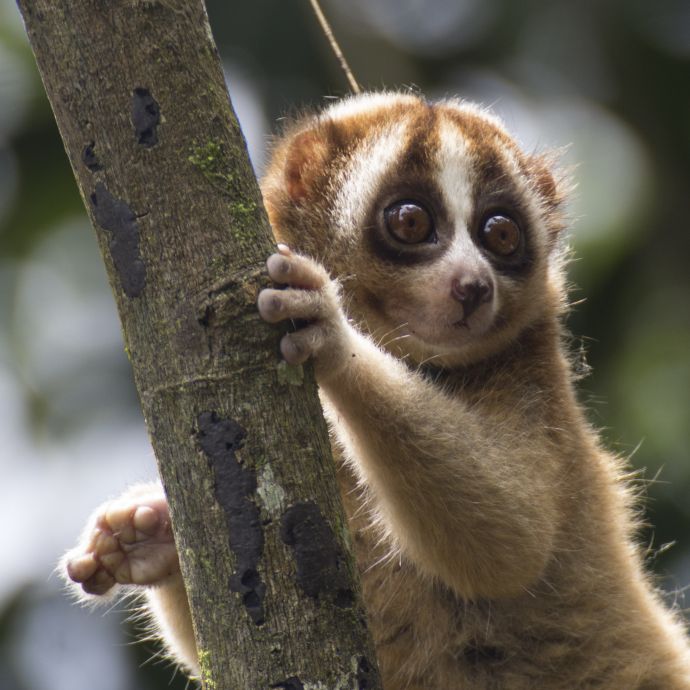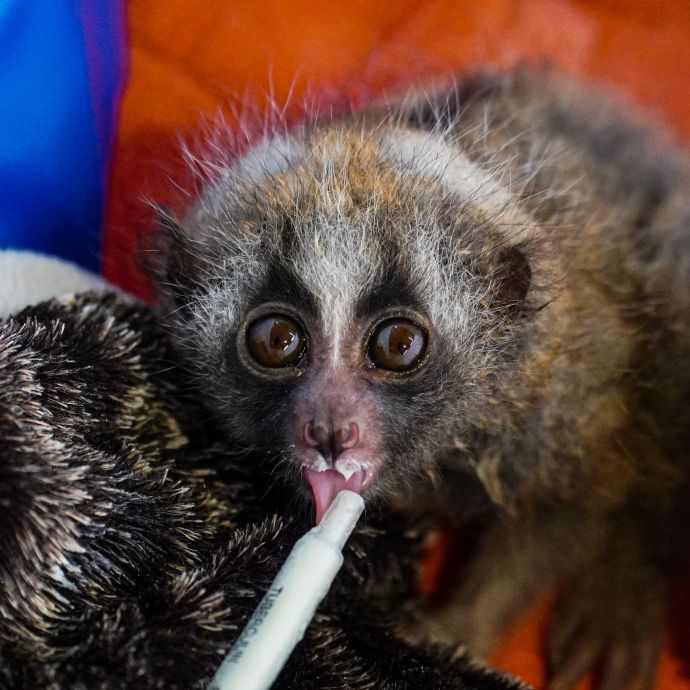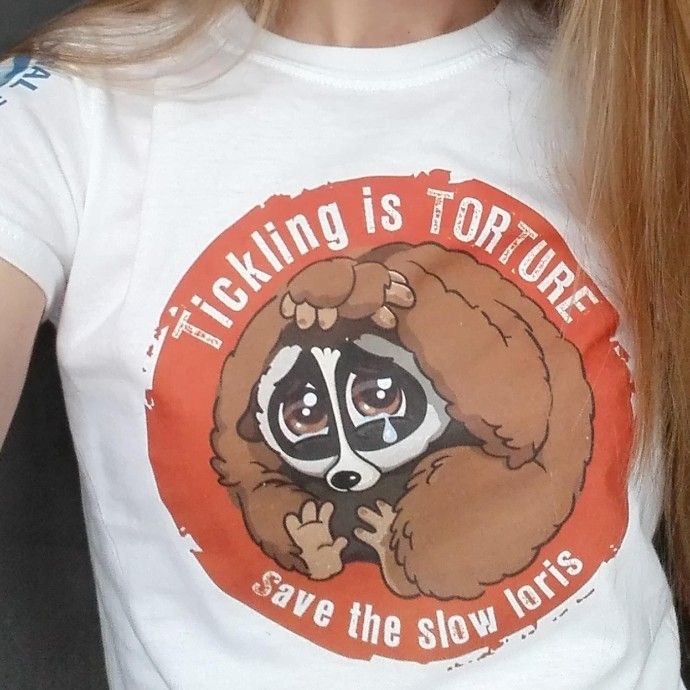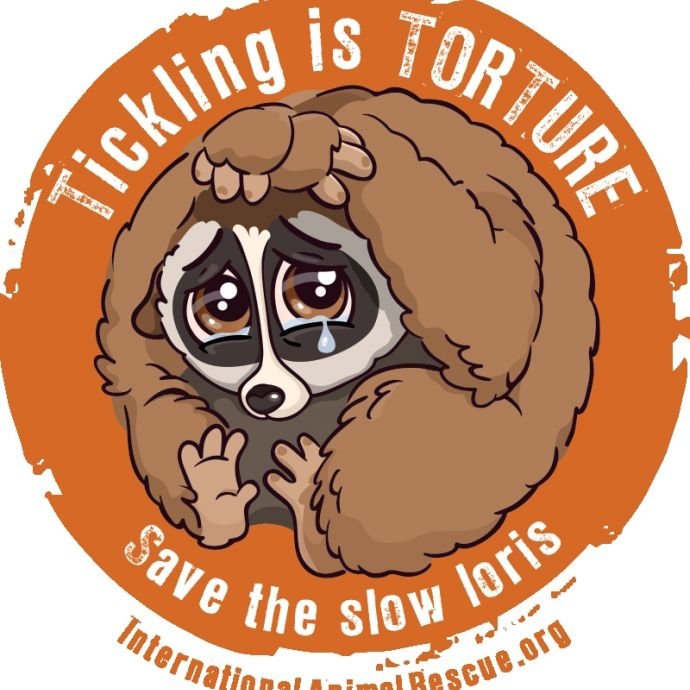The
Horrible
Truth
Introduction
If you come across a video or photo of a pet slow loris on the internet, please know that, while it may appear cute, the animal in the video is suffering and so is the entire species.
Not only does the slow loris pet trade cause unimaginable suffering, it is also the biggest threat to the survival of the species, which is in serious danger of extinction.
We run the world’s largest rehabilitation centre for critically endangered slow lorises. To date, we have rescued over 1000 lorises and released 670 back into the wild to help rebuild the future of the species. In 2015 we launched our ‘Tickling is Torture’ campaign to expose the shocking truth behind the slow loris pet trade.
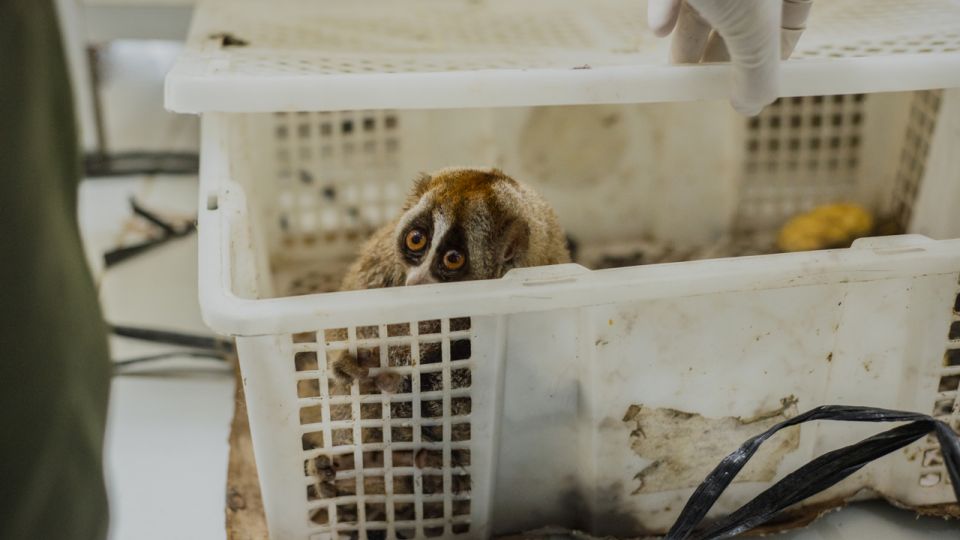
Learn More About The Slow Loris Pet Trade
-
How the slow loris became someone’s pet
STEP ONE: CAPTURE
Thousands of slow lorises are poached from the wild to be illegally sold on the street or in animal markets. Often whole families of slow lorises living in the wild will be captured for the pet trade.
STEP TWO: TEETH CUTTING
Before a slow loris is sold as a pet, its teeth are cut out using nail clippers, wire cutters or pliers with no anaesthetic. This is to make them easy to handle and to protect humans from their potentially deadly venomous bite. This is an incredibly painful procedure that often results in infection or death through blood loss.
STEP THREE: TRANSPORT
Lorises are transported to markets in dark, overcrowded and poorly ventilated containers. The stress of this transport results in a mortality rate of between 30% and 90%. Often captured lorises are found in crates alongside the bodies of other lorises that have died.
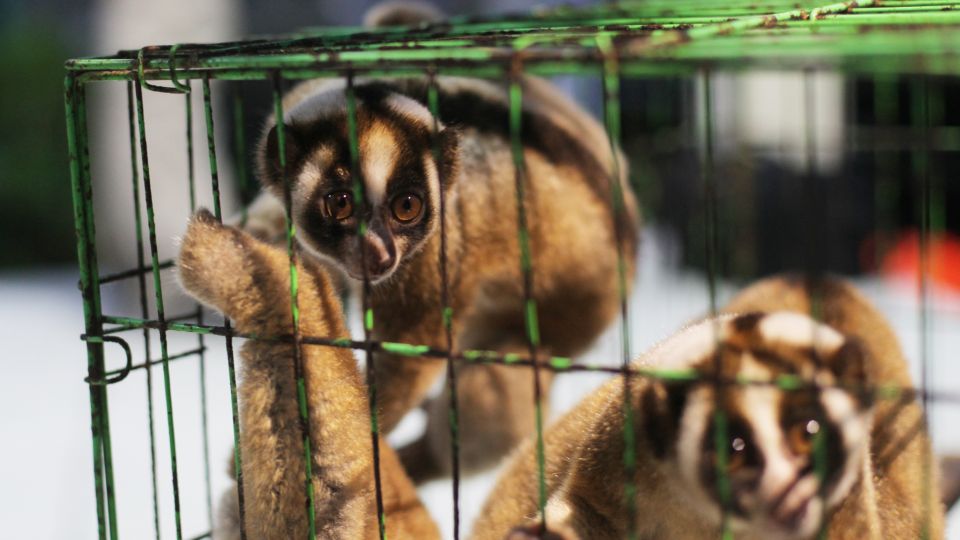
-
Why slow lorises are not suitable pets
• Slow lorises are nocturnal animals. Therefore, being kept in a brightly lit room is incredibly uncomfortable and causes pain and suffering.
• Slow lorises cannot express natural behaviours in captivity. In the wild they travel long distances at night in their search for food, making confinement in a small cage incredibly cruel.
• In the wild the slow loris would feed on a complex diet of fruits and insects, owners often struggle to meet these special dietary needs. This leads to obesity as well as other serious health problems such as: infection, pneumonia, diabetes, metabolic bone disease and malnutrition.
• Slow lorises have a venomous bite that is harmful to humans. Usually their teeth are clipped but if their teeth are still intact they mix venom secreted from a gland inside their upper arm with saliva to deliver a venomous bite. This can cause anaphylactic shock and even death in humans.
• It is illegal in many countries to keep a loris as a pet. Most countries have rules against the purchase of exotic species (including the slow loris). It is highly doubtful that any slow loris would be being kept as a pet legally.
• Slow lorises are in serious danger of extinction, with the biggest threat to survival being the illegal trade in wildlife. Having a slow loris as a pet encourages the trade and therefore pushes these extraordinary animals closer to extinction.
• They use urine to mark their territory – making them rather smelly!
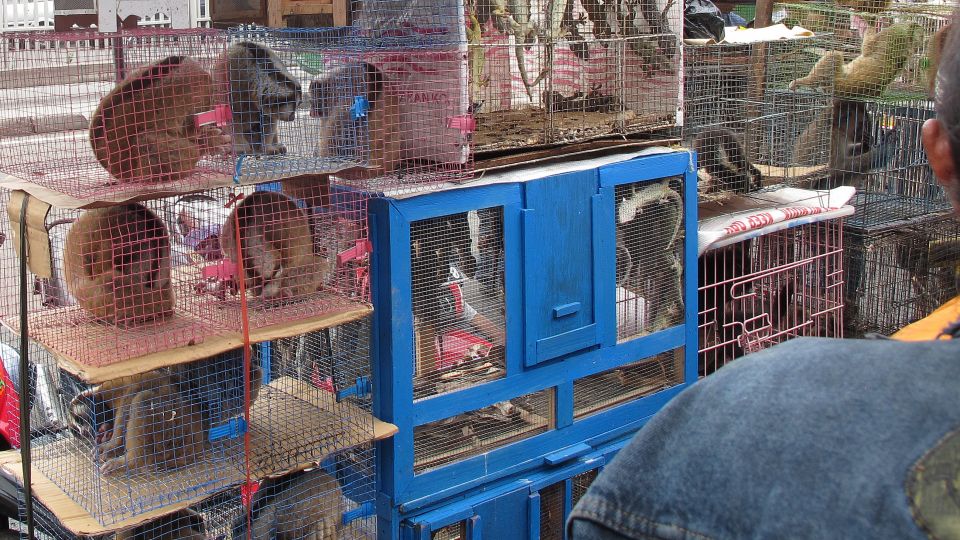
-
The truth about internet sensations Sonya and Kinako
There are many videos and images of slow lorises being kept as pets circulating on the internet. Two of the most popular are ‘Slow loris loves being tickled’ and ‘Slow loris eating a riceball’.
Without an understanding of the behaviour and physiology of slow lorises, it is easy to assume that these slow loris pets are happy and enjoying being tickled and eating rice balls. Sadly, this could not be further from the truth …
- Sonya the slow loris is in an incredibly defensive position. Lorises are the only venomous primate and this venom is secreted from a gland on the inside of their elbow. Lorises raise their arms and mix the venom with saliva before biting their victim. The bite is extremely painful and the venom can bring on anaphylactic shock and even death in humans. This slow loris is not putting its arms up to ask for more, it is terrified and trying to defend itself!
- Both of the slow lorises in these videos are incredibly uncomfortable. Slow lorises are nocturnal animals, their eyes have adapted to see in the dark which makes being in a brightly lit room uncomfortable and distressing.
- Both lorises are severely obese. In the wild the slow loris would feed on a complex diet of fruits and insects, owners often struggle to meet these special dietary needs. This leads to obesity as well as other serious health problems such as: infection, pneumonia, diabetes and malnutrition. Unfortunately, many of the slow lorises that we rescue are suffering so badly from health problems relating to an inadequate diet that they are no longer able to be released back into the wild.
Videos such as this are causing an increase in the demand for slow lorises as pets and are therefore fuelling this horrendously cruel and illegal trade! As a result, slow lorises are in serious danger of extinction.
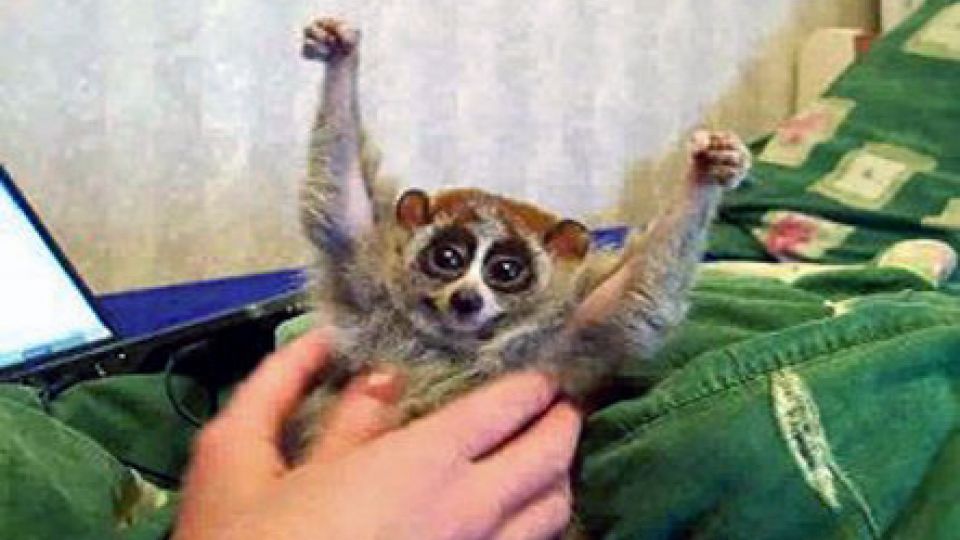
- Sonya the slow loris is in an incredibly defensive position. Lorises are the only venomous primate and this venom is secreted from a gland on the inside of their elbow. Lorises raise their arms and mix the venom with saliva before biting their victim. The bite is extremely painful and the venom can bring on anaphylactic shock and even death in humans. This slow loris is not putting its arms up to ask for more, it is terrified and trying to defend itself!
Frequently Asked Questions
-
‘This Loris was born in a pet shop! It’s domestic and looks happy!'
People may state that their pet slow loris was born in a pet shop, however this is highly unlikely - even if the owner doesn’t realise it. It is notoriously difficult to breed lorises in captivity.
To run a successful loris breeding programme you would need an immense knowledge of loris ecology and also suitable facilities for breeding, a pet shop environment simply cannot provide such things. In addition to this, lorises only have one offspring at a time (apart from pygmy slow lorises that have twins) and have a long inter-birth interval of around 16 months. It is therefore highly unlikely that lorises are being successfully bred in pet shops.
However, even if someone’s pet loris was born in a pet shop – that does not make owning it okay. Buying a pet slow loris supports the trade that is causing these amazing animals to become extinct and any loris kept as a pet will be suffering, regardless of where it was born.
-
‘This slow loris has all its teeth’
It is important to realise that we rarely get a full look at the slow lorises teeth in these types of videos, therefore people could easily lie.
The owner also may not be aware that the teeth may have been fractured or partially removed. Just look at the case of our rescued slow loris ‘Lily’. On rescue it appeared that Lily’s teeth were all intact. However in the months following his rescue, he developed a bacterial infection as he had a fracture in just one tooth. It is likely that although his teeth were not fully clipped, the traders had tried to clip them and did damage to just one tooth which lead to the bacterial infection and large amounts of pain and suffering for poor Lily.
Even if a pet loris does indeed have its teeth it does not excuse the fact that this person is supporting the cruel slow loris pet trade and causing their pet huge amounts of suffering! The loris will still have been poached from the wild, it will still have been transported in terrible conditions and it will still be being kept in a cage, in a brightly lit room, being fed an inappropriate diet and unable to perform natural behaviours. The removal of teeth is just one horrendous part of this cruel issue and stating that the loris ‘still has his teeth’ does not justify keeping this animal as a pet.
-
‘Slow lorises are endangered – so this is good, right?’
This argument is simply not valid. It is their popularity as pets that is causing the slow loris to be at serious risk of extinction - keeping a slow loris as a pet supports and encourages the pet trade and as a result is endangering this amazing species.
In addition to this, any captive breeding programmes are very unlikely to be successful as it is notoriously difficult to breed lorises in captivity. To run a successful loris breeding programme you would need an immense knowledge of loris ecology and also suitable facilities for breeding. Slow lorises only have one offspring at a time (apart from pygmy slow lorises that have twins) and have a long inter-birth interval of around 16 months. It is therefore highly unlikely that lorises can be successfully bred in captivity.
Even if a slow loris is successfully bred in captivity for the pet trade it would not be part of a reintroduction programme and would therefore not benefit the wild population in any way. the only way to save this species is to keep them in the wild, where they belong.


